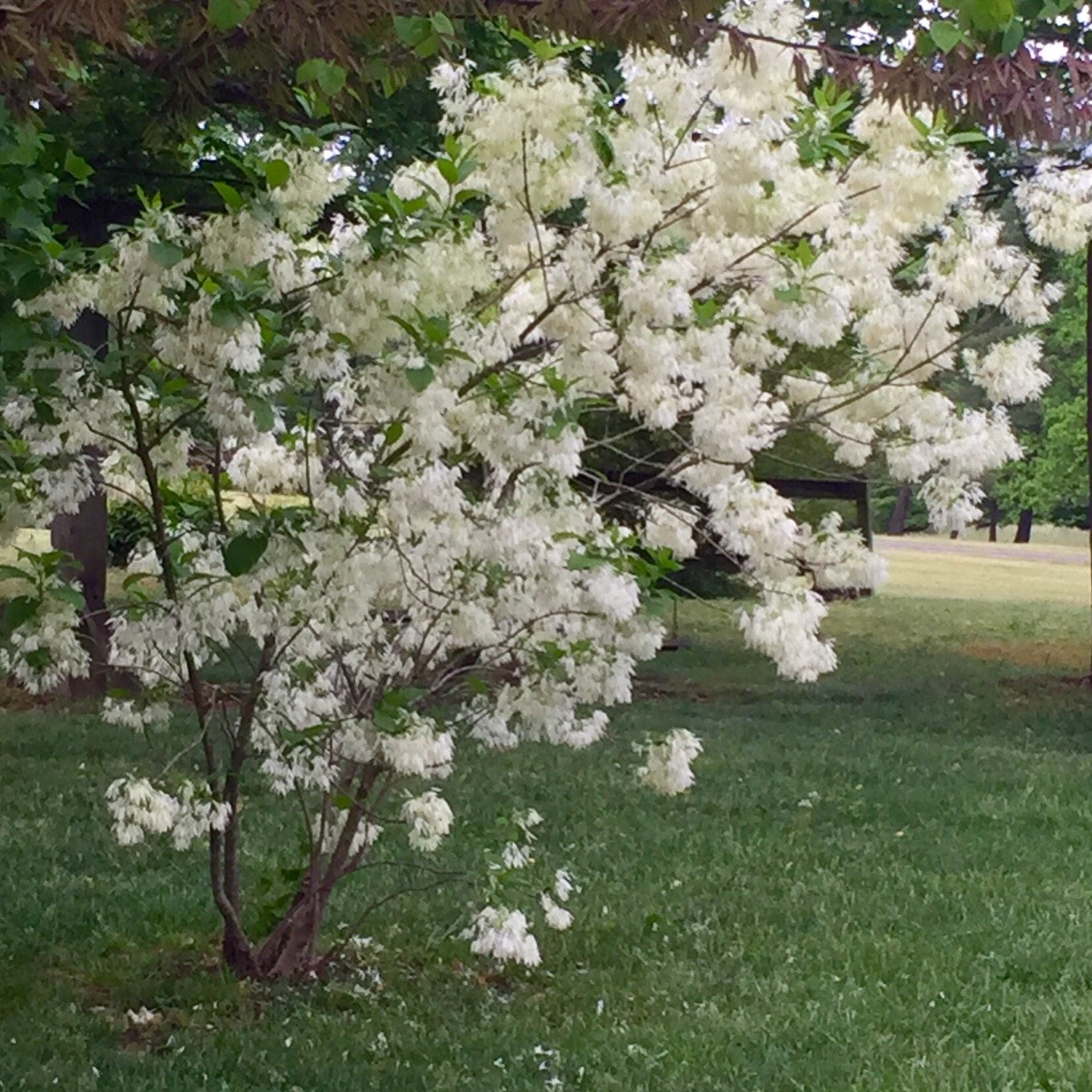What Is A Fringe Tree: Tips On Caring For Fringe Trees


In early spring, just as the dogwood blossoms begin to fade, the delightful, fragrant flowers of the fringe tree burst into bloom. Fringe trees are outstanding landscape trees with many features to recommend them. Want to know more? You'll find all the fringe tree information you need in this article.
What is a Fringe Tree?
Native to the southeastern U.S., Chionanthus virginicus can grow anywhere in the country except for the southernmost tip of Florida. Its botanical name means snow flower and refers to the tree's large clusters of snow-white flowers. There is also a Chinese fringe tree, C. retusus, which is very similar to the native species but has smaller flower clusters. It hasn't yet proven itself to be invasive, but as with all imported species, there is always a chance that problems may arise. There are male and female trees, and you'll need one of each if you want to have a crop of berries that are coveted by wildlife. If you only want one tree, choose a male for its larger, showier flowers. The tree is deciduous, and the leaves turn yellow in autumn. Although you may find fringe trees growing naturally in moist woods and on streambanks and hillsides, you probably won't be able to bring one home to plant in your garden, as they don't transplant well.
Fringe Tree Information
Fringe trees grow only 10 to 20 feet (3-6 m.) tall, so they fit in almost any garden. Use them in groupings, in shrub borders, or as specimens. They look spectacular when in bloom, and the large, white flowers are followed by hanging blue or purple berries that bring birds and other wildlife to the garden. In summer you'll enjoy a neat, oval-shaped canopy of dark green leaves. The fruit and flowers don't leave behind a mess to clean up, making fringe tree care simple. You don't have to worry about planting a fringe tree under power lines. Their short stature means they won't interfere with the lines. The trees tolerate urban conditions, including air pollution, but they won't tolerate street salts or dry, compacted soil. The branches are strong and withstand all kinds of wind and weather, but the flowers are more delicate, and if you want them to last, plant the tree in a sheltered location.
Caring for Fringe Trees
For best results, plant fringe trees in moist, well-drained soil in full sun or partial shade. As with most flowering trees, more sun means more flowers. Dig the planting hole as deep as the root ball and two to three times as wide. After you place the tree in the hole, backfill with the soil you removed from the hole without additives or enhancements. Water thoroughly when the hole is half full of soil and again when it is completely full, tamping down to remove air pockets. The tree won't withstand prolonged drought. Water before the soil around the roots has a chance to dry completely at root depth. Unless the soil fertility is naturally moderate to high, fertilize annually with about an inch (2.5 cm.) of compost or use a complete and balanced fertilizer according to the label instructions. The sturdy branches of a fringe tree seldom need pruning. The canopy develops a naturally tight, oval shape.
Gardening tips, videos, info and more delivered right to your inbox!
Sign up for the Gardening Know How newsletter today and receive a free copy of our e-book "How to Grow Delicious Tomatoes".

Jackie Carroll has written over 500 articles for Gardening Know How on a wide range of topics.
-
 5 Tough Urban Trees That Thrive In Cities – Top Picks For Urban & Suburban Landscapes
5 Tough Urban Trees That Thrive In Cities – Top Picks For Urban & Suburban LandscapesExplore the best urban trees that will add value to even the most challenging of landscapes. Get growing with these ideas and enjoy all the benefits of trees.
By Teo Spengler
-
 7 New & Improved Cultivars Of Old-Fashioned Plants – These Aren’t Your Grandma’s Plants!
7 New & Improved Cultivars Of Old-Fashioned Plants – These Aren’t Your Grandma’s Plants!Old is new again! These old-fashioned plants have new cultivars that are sure to thrive in your garden and bring the charm factor. Neighbors will be envious!
By Mary Ellen Ellis